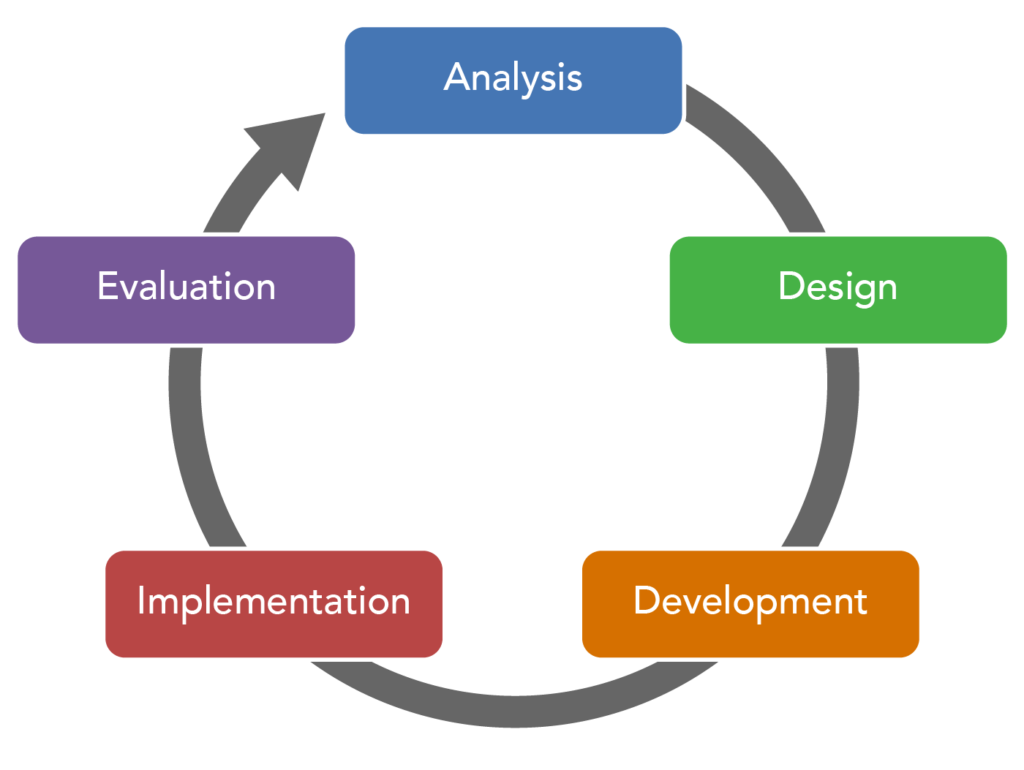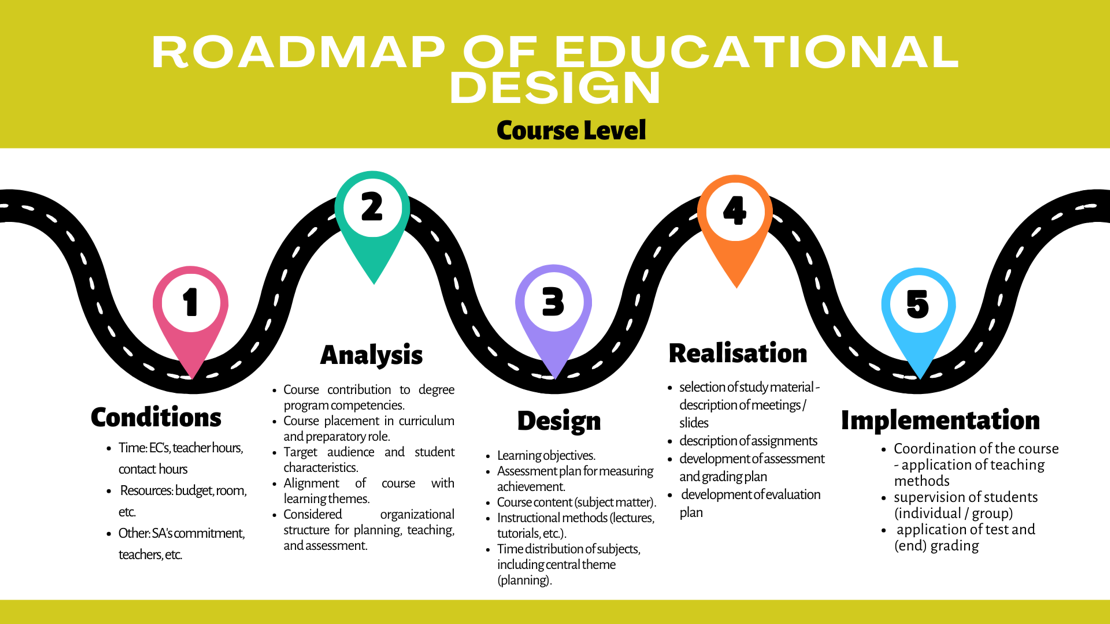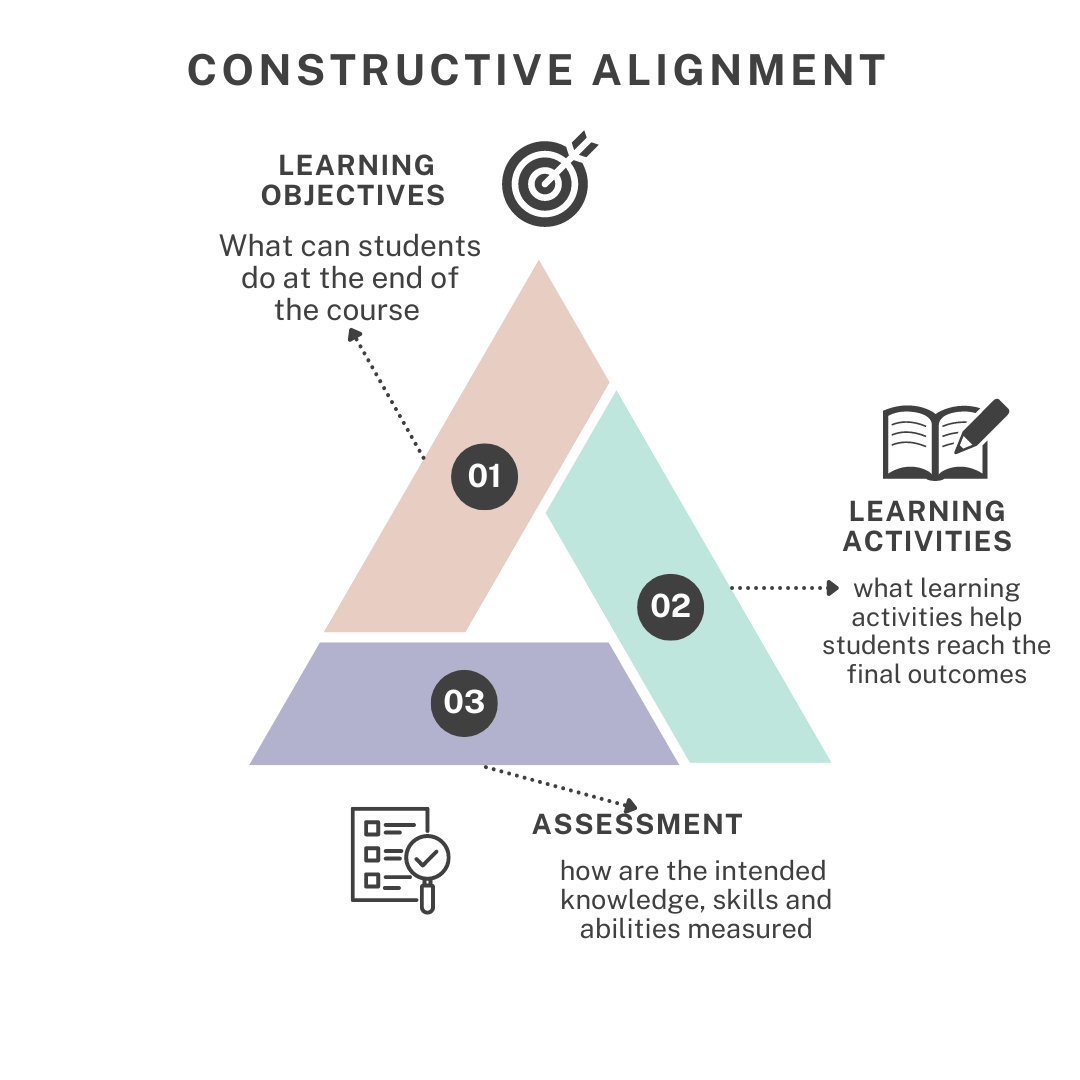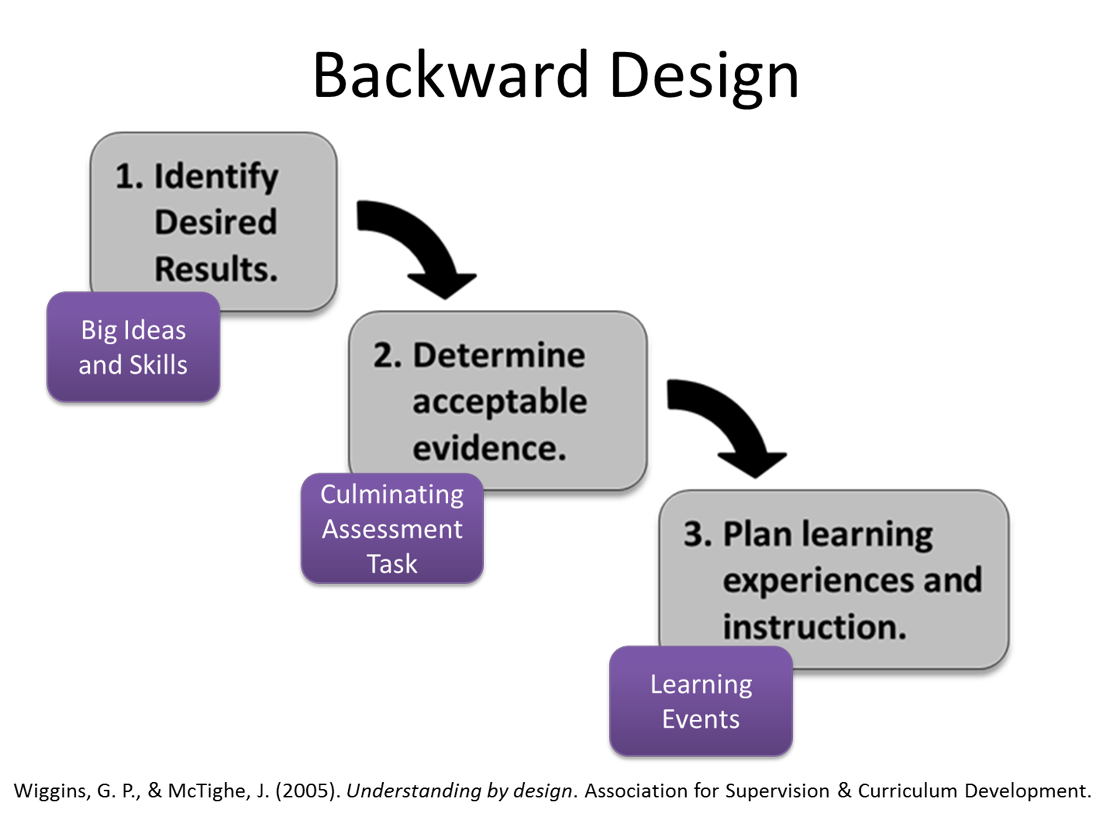In this section you can get more acquainted with the general main principles of Educational Design:
The ADDIE MODEL
The ADDIE model is a systematic instructional design framework comprising five phases—Analysis, Design, Development, Implementation, and Evaluation—used to create effective learning experiences.
The ADDIE model is a systematic instructional design framework used for developing effective learning experiences. The ADDIE model is a structured, five-step process used in instructional design to create effective learning experiences. Each step represents a distinct phase in the development of instructional materials:

- Analysis: This phase involves gathering information about the learners, their needs, the context of learning, and any constraints. It helps identify the goals and objectives of the instruction.
- Design: In this phase, the instructional designer plans the overall structure and content of the learning materials. This includes deciding on the instructional strategies, media, and assessments to be used.
- Development: Once the design is finalized, the actual instructional materials are developed. This may include creating presentations, writing content, designing activities, and developing multimedia elements.
- Implementation: Here, the instructional materials are put into use with the learners. This phase involves delivering the instruction as planned, whether through face-to-face teaching, online courses, or other delivery methods.
- Evaluation: The final phase involves assessing the effectiveness of the instruction. This includes gathering feedback from learners, assessing their performance, and evaluating whether the instructional goals were met. The evaluation results are used to improve future iterations of the instruction.
COURSE DESIGN MAPPING
Mapping the course design is crucial for ensuring alignment between learning objectives, instructional materials, and assessments, ultimately enhancing the effectiveness and coherence of the educational experience.
The Design Process Roadmap In the course design process, ensuring alignment across various levels is essential for coherence and effectiveness. You will need to map your course on the:
- curricular level
- course level
- educational meeting level
By mapping learning objectives, materials, and assessments at each of these levels, instructors can ensure that all components of the course are aligned and contribute to the overall success of the educational experience.

LEARNING THEORIES
Integrating learning theories into the design process helps educators select instructional strategies tailored to how students learn best, fostering engagement and optimizing curriculum design. By grounding instructional decisions in theoretical principles, educators promote evidence-based practices that enhance the effectiveness of teaching and learning.
constructive alignment & backward design
Constructive alignment and backward design are instructional design approaches used to ensure that course objectives, assessments, and instructional activities are aligned to promote effective learning outcomes.
A triangular Relationship: Constructive alignment and backward design are instructional design approaches used to ensure that course objectives, assessments, and instructional activities are aligned to promote effective learning outcomes.
This approach, proposed by educational theorist John Biggs, emphasizes aligning learning objectives, teaching methods, and assessment strategies to ensure coherence and effectiveness in achieving desired learning outcomes. In constructive alignment, course design starts with clearly defined learning objectives, followed by the selection of appropriate teaching methods and assessment strategies that support these objectives. The aim is to create a cohesive learning experience where every element of the course contributes to the achievement of the desired learning outcomes.

Backward design, often associated with educational theorists Grant Wiggins and Jay McTighe, reverses the traditional course design process. Instead of starting with content or activities, backward design begins with the end goal in mind: the desired learning outcomes. Educators first identify the desired learning objectives and then develop assessments to measure students' attainment of these objectives. Finally, instructional activities and content are selected and designed to support students in achieving the established learning goals. This approach ensures that every aspect of the course is intentionally aligned with the desired learning outcomes, leading to more focused and effective teaching and learning experiences.
THE 3 STAGES OF BACKWARD DESIGN

Instructors ask three progressive questions to focus on valuable content:
- What content should participants encounter?
- What knowledge and skills should participants master?
- What are the big ideas and enduring understandings?
In this stage, it is important to identify overarching learning goals, highlights important concepts and abilities, and determine the most valuable content for courses. Instructors can formulate concrete learning goals aligned with desired results.
In the second stage of backward design, instructors focus on assessments and performance tasks for students. They consider how to determine if students have achieved the desired results. Key questions include:
- How will I know if students have achieved the desired results?
- What will I accept as evidence of student understanding and proficiency?
It's essential to align assessments with learning goals to avoid frustration. Assessment methods may include:
- Term papers
- Short-answer quizzes
- Free-response questions
- Homework assignments
- Lab projects
- Practice problems
- Group projects
The aim is to use a variety of assessment methods to ensure a comprehensive evaluation of student learning.
The final stage of backward design involves planning instructional strategies and learning activities. Instructors consider what knowledge and skills students need to achieve desired results. Key questions include:
- What enabling knowledge and skills are necessary for effective performance?
- What activities will equip students with needed knowledge and skills?
- How should teaching and coaching be conducted to meet performance goals?
- What materials and resources are best suited for these goals?
Instructional strategies may include:
- Large and/or group discussion
- Interactive lecturing and think-pair-shares
- Flipped classroom
- Cooperative learning (including team-based and project-based learning)
- Guided note-taking
- Guided inquiry for problem-solving
- The aim is to select strategies that align with learning goals and facilitate effective learning experiences for students.
CONTENT ANALYSIS
Content analysis is crucial in designing education because it ensures that instructional materials, curriculum, and assessments are aligned with learning objectives and educational standards.
PRACTICAL COURSE DESIGN EXAMPLES
An example of Educational Design Evidence Here you can view the evidence of the educational design process for the module design Psychology




